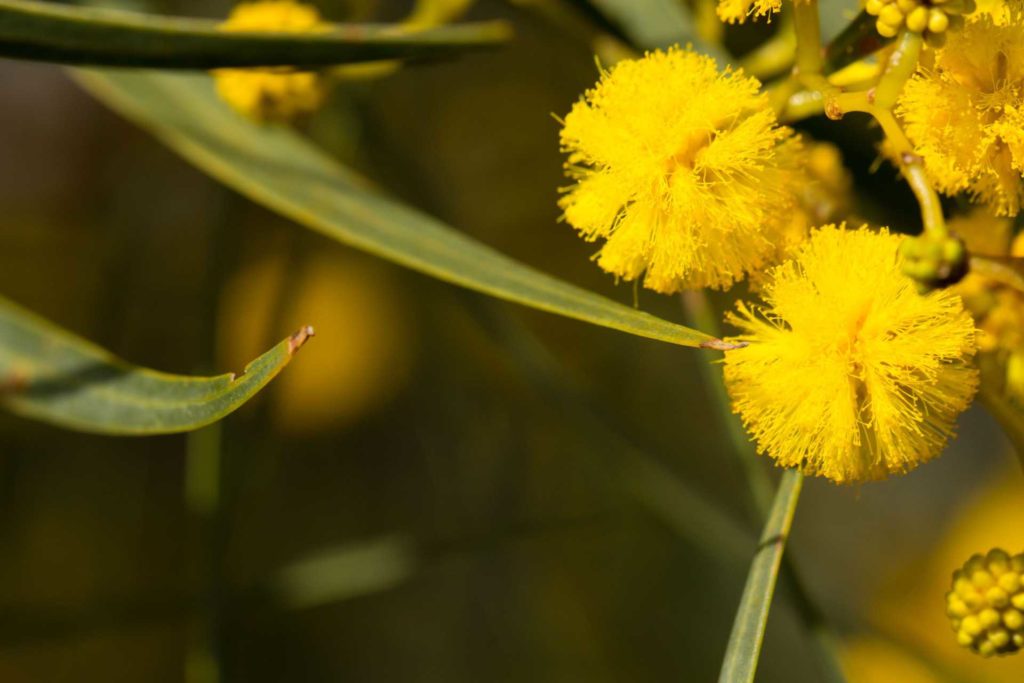Makuru, the coldest and wettest time of the year, has come to a close and Djilba has arrived!
Djilba season, generally spanning the August to September period, is a transitional time of the year and is considered by Noongar people as the season of conception, or the growing season. It is characterised by some very cold and clear days, along with warmer, rainy and windy days and the occasional sunny day or two.
It is also a time to look out for masses of yellow and cream flowers appearing in the landscape across the South West. This starts with the yellow flowering plants such as the Acacias. You will also notice the white flowers of the wannang, or weeping peppermint (Agonis flexuosa) emerging. Some vivid and striking blues and purples continue to dot the vegetation, such as the blueberry lilly (Dianella revoluta), purple flag (Patersonia occidentalis) and native wisteria (Hardenbergia comptoniana).
Traditionally, the main food sources continued to include the yonga (kangaroo), waitj (emu) and koomal (brush-tailed possum), as in the previous cold season. However the emergence of wannang flowers signal the coming warmer weather and with it a move back to the coast for a change in diet for Noongar people. Coastal and estuarine areas will soon become more hospitable and about to release their bounty once again.
As the season progresses we also start to see and hear the first of the newborns with their proud parents out and about providing them food, guiding them through foraging tasks and protecting their family units from much bigger animals, including people. The woodland birds will still be nest bound and very protective of their still vulnerable young, hence the notorious swooping protective behaviour of species like the koolbardi (magpie) and even the djidi-djidi (willy wag tails).
As the temperatures continue to rise the distinctive flower stalks of the balga (grass tree) will start to emerge, prior to the coming Kambarang season.



